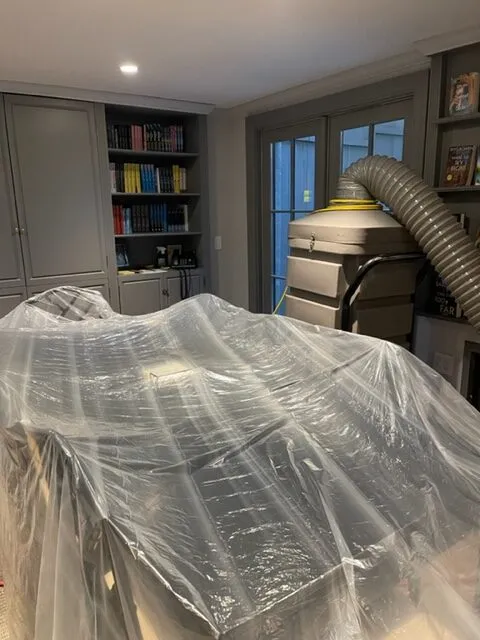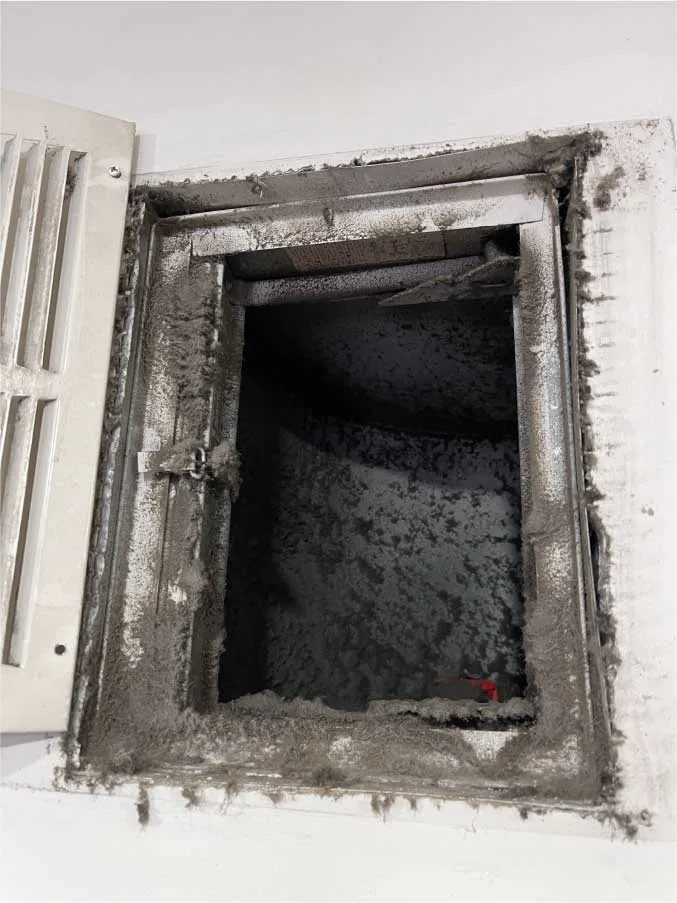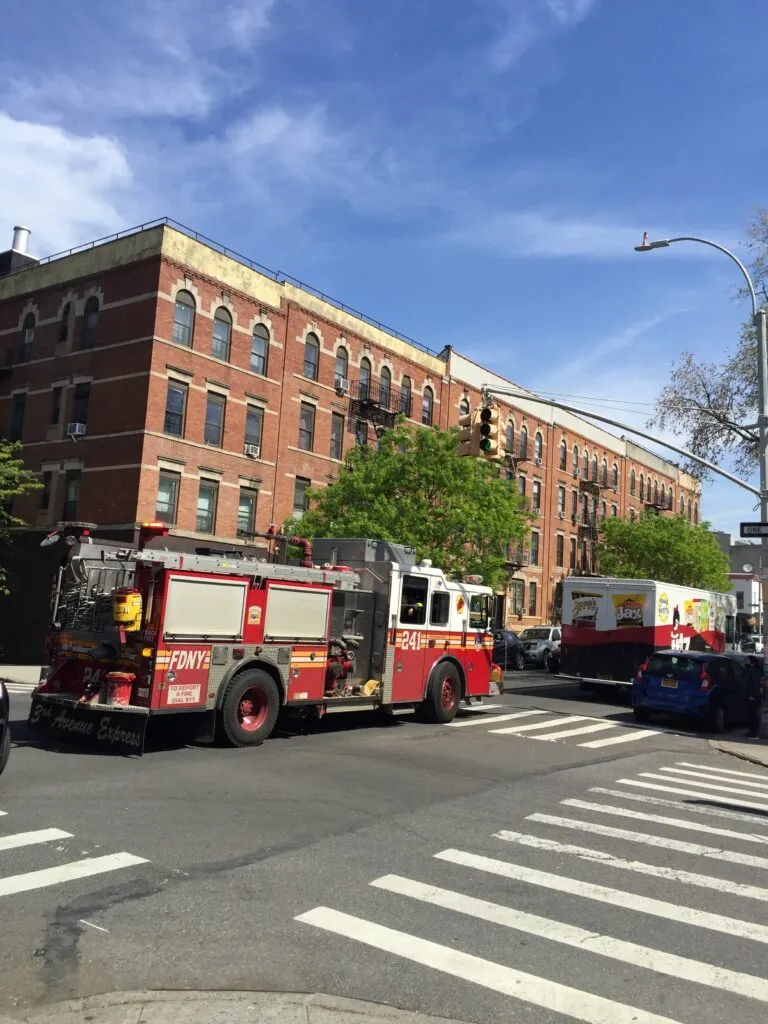Asthma in Kids? Bringing Newborn Home? Your #1 Task is a Deep Air Duct Cleaning, let’s us show you why. Asthma in Kids Newborn Deep Air Duct Cleaning.
There are numerous benefits to air duct cleaning service near me. However, many people overlook the importance of air duct cleaning as either they are not aware of or don’t understand the health risks that filthy air ducts might provide.
If you are one of those people, then we must tell you, you really need to understand how air duct cleaning machine positively impacts your health and saves you from many health issues caused by poor indoor air quality.
For instance, air duct cleaning becomes crucial when you have a newborn at home because good home air quality is essential for keeping your newborn in good health.
Why Do You Need Air Duct Cleaning In Your Home?
Everything from furniture to appliances must be cleaned regularly for optimal use and to safeguard the environment. When something gets dirty, the surroundings are damaged, and it looks unpleasant. Air ducts, in particular, create problems in many ways.
All of the air in the house comes from air ducts. When they become unclean, the air becomes contaminated. Therefore, the home’s environment can become unclean and unhealthy.
Health problems are fairly common among infants. Consequently, a messy home poses a serious risk to their health. Getting regular air duct cleaning is recommended for you to have healthy kids and fresh air in your home.
Getting Ready Before Newborn for Quality Indoor Air
When your baby is expected to enter the world, you’ll need to keep an eye on the temperature and humidity, but you need to take care of the air quality first. Check your ventilation system for any dust or debris, as a dusty environment doesn’t go well with infants.
If you find traces of dust in your ventilation system, clean it at the earliest. It’s best if you immediately call professional air duct cleaning services for this purpose, as they have special tools for detailed cleaning of your ducts and ventilation system.
What Is The Connection Between Bringing Newborn Home And Air Duct Cleaning?
Air-conditioners in a house that are working well and properly maintained make indoor air much cleaner and fresher. Your baby may feel much more comfortable from the start, and you and your toddler may get better sleep as well. But before we go any further, let’s stop and talk about expectant mothers.
Pregnant women also need clean, breathable air to remain in good health. Besides proper nutrition, proper indoor air quality also contributes to the healthy growth of a fetus since a significant amount of time is spent relaxing indoors. If the air in the home is contaminated, allergies in the newborn are likely to develop before birth.
Children’s Health at Risk
The smaller and still developing airways of children make them more vulnerable to inhaling contaminated air than adults. Additionally, because they breathe more quickly than adults do, babies breathe in more contaminated air.
Another reason that makes children more susceptible to air pollution is the fact that they are generally close to the ground level and exposed to cigarette smoke, etc.
Furthermore, air pollution can result in low birth weights and preterm births if long-term exposure occurs. Early birth puts infants at greater risk for many ailments, including brain damage risk, inflammation, pneumonia, lower respiratory infections, and others.
Preterm births and low birth weights brought on by contaminated air make it worse for infants as these birth issues develop lung difficulties in infants. Globally, approximately 1.8 million premature deaths occur as a result of this.
The risks of indoor air pollution for your child include:
- Development of asthma in kids during childhood or when they grow up. If there are already signs of asthma in kids, air pollution might exacerbate it.
- Pneumonia, rashes on the skin, and allergies
- Coughing
- Severe lower respiratory bacterial disease in kids under five.
These health risks for children and infants due to polluted air make air duct cleaning for newborns an essential task to perform. You need air duct cleaning to help asthma prevention in children, infants, and adults.
How to Improve the Air Quality in Your Baby’s Bedroom
The following ways can help you provide improved home air quality for your children and babies.
- Change the Humidity Level
Humidifiers frequently increase indoor humidity, which promotes the growth of undesirable bacteria, yeasts, and molds. Install a hygrometer on the room’s wall to check the humidity; if the relative humidity in the space surpasses 60%, cut back on your humidifier’s usage.
The humidifier should be thoroughly cleaned and sanitized regularly.
- Install a High-Quality Air Purifier in The Baby’s Room
By removing unwanted airborne particles and circulating cleaner air, air purifiers enhance the quality of air in a single space. Therefore, you should install a high-quality air purifier in your baby’s room to help prevent asthma in kids and provide them with good home air quality.
- Refuse To Use Toxic Paints
Did you know that harmful chemicals continue to be released years after wall paints and finishes have been applied? These substances are nothing more than different types of volatile organic compounds (VOCs), which can have detrimental short-and long-term effects on health.
VOCs not only harm human health but also seriously endanger the environment. Low-VOC or zero-VOC paints, on the other hand, have been developed in response to stringent environmental laws. Remember to buy VOC-free paint to prevent your kids from breathing harmful fumes while they are sleeping.
- Use A HEPA Filter Vacuum
Obtaining HEPA (high-efficiency particulate air) credentials requires a vacuum to capture 99.7% of physical matter below 0.3 microns. The dangerous, minute allergens that frequently cause respiratory sickness are subsequently eliminated by HEPA vacuums.
Remember to replace the bag once it has been filled more than halfway. For the best cleaning results, use the right floor attachment.
- Frequently Swap Out the Air Filters in the Building
Look inside the vent and housing of your window air conditioner if it is older than three years. You’ll probably notice mold growth everywhere. Infectious mold spores may be released by old air conditioners, contaminating bedrooms.
If you have central heating or cooling, you should also replace the air filters and plan to give the HVAC system a thorough cleaning. Think about changing out old window air conditioners.
- Minimize Pet Dander
Pets expel dead hair, feathers, or dead skin cells which could harm your child’s nose and lungs. While regular grooming can help reduce dander transmission, you cannot completely prevent your pets from shedding. Your toddler’s room’s bedding should be regularly washed to help prevent the spread of dander.
The air can carry dander from your pets into your baby’s room, so keeping them out may not be enough. Even in places where pets are prohibited, they can be discovered.
Thankfully, HEPA filters can capture pet dander and prevent it from getting into your child’s room. Install HEPA filters as often as you can in your home.
- Steer Clear Of Renovations Before or After the Birth of Your Child
Ultra-fine materials, including asbestos dust, mold spores, and fiberglass, are released into the air during restorations and might linger there for a few weeks.
Unlike larger particles, these ultra-fine particles are much more harmful to the lungs since they cannot be effectively filtered by the lungs. Children and newborns are most vulnerable to bronchial irritation and life-threatening infections since their lungs are still growing.
- Always Check the Air Quality
Keeping an eye on the indoor air quality in your baby’s room can relieve you from worrying about indoor home air quality. Since you can’t see the allergens moving throughout the area, this is a challenging task.
Although the dust particles are not always apparent, you can see them when it is sunny. Purchasing equipment made specifically for this purpose is one approach to keeping an eye on the air quality. Use a smoke detector that additionally detects carbon monoxide levels.
An air quality monitor can tell you how much dust, allergens, chemical pollutants, and humidity are present in a given area. However, it doesn’t provide you with any precise mold growth information. The presence of adequate moisture and humidity will tell you about mold growth in your home.
- Purchase Safe Furniture
Avoid buying cribs, mattresses, and other nursery furnishings that release formaldehyde or have heavy latex paints or pressed wood. This can lessen the chance of your baby breathing in potentially harmful chemicals and maintain your home air quality.
Moreover, avoid volatile organic compounds (VOCs) in paint, as even dry pigments can release gases.
- Adequate Ventilation
The HVAC system can’t circulate fresh air if the house is completely shut off from the outside. The system will keep circulating the same air. Keeping the home ventilated helps prevent air pollution from building up and replenish healthy, clean air. You should open windows to let fresh air in whenever it is possible to do so.
Wintertime allergies are less frequent. An increase in pet dander, cockroach droppings, and house dust mites may cause problems for particularly sensitive people. This happens because, in the winter, most of the time, windows are closed to prevent cold air from entering the home.
However, this deprives your home of fresh air and thus results in allergy issues for individuals or children living in the home. During these months, it is advised to make sure there is enough ventilation.
Indoor Air Quality Risks
Air purifiers that produce ozone are available on the market. They deliberately produce ozone gas. However, ozone in high quantities reacts with organic substances both inside and outside the body.
Ozone can damage the lungs when breathed in. This may result in throat irritation, coughing, shortness of breath, and chest pain. Asthma and other chronic lung conditions may get worse as a result. Additionally, it may make lung infections more likely.
Mildew, pet dander, animal droppings, mold, pollen, and dust mites are the other commonly found sources of indoor pollution. Other indoor air pollution sources include:
- Carbon Monoxide
Fuel-burning stoves, heaters, and other appliances discharge carbon monoxide (CO) and other pollutants into the air. Carbon monoxide prevents oxygen from moving throughout the body.
The effects of CO vary according to how much is taken in. It can impair balance, exacerbate heart issues, and bring on excessive fatigue, headaches, disorientation, nausea, and dizziness.
A very high concentration can be fatal. Even more susceptible to high CO levels are children, infants, pregnant women, older adults, and those suffering from heart and lung conditions.
- Radon
A radioactive gas called radon penetrates through your foundation’s rocks and dirt. Radon can penetrate a house through gaps in the drains, walls, foundation, and other structures.
After smoking, radon exposure is the second most common factor in lung cancer development. Smokers and ex-smokers who are exposed to radon may be significantly more likely to get lung cancer and pass away from it.
- Nitrogen Monoxide
This is a byproduct of the burning of kerosene and natural gas. It is odorless and colorless, just like CO. In high quantities, it shortens breath and affects the mucous membranes of the nose, throat, and eyes.
Long-term inhalation of nitrogen dioxide can cause lung damage. It could result in persistent bronchitis. People who have asthma and chronic obstructive lung disease may experience worsening symptoms from exposure to low levels (of COPD).
Furthermore, it might make other respiratory illnesses worse.
- Sulfur Dioxide
The combustion of kerosene in a space heater produces this gas. The upper respiratory system and eyes are both severely irritated by it.
Which Elements Impact the AQI in Your Home?
The following actions and things might deteriorate your home air quality:
- Paint vapors
- Dust mite particles
- Candle or cooking smoke
- CO2 in the home
- Animal dander
- Excess humidity or moisture
- The Decline of Asbestos
- Products containing tobacco
- Cleaning solutions containing harmful chemicals
- Mold spores
- Hairsprays or perfumes
- Bacterial Matter in the Air
- Burning plastic, trash, or wood
This means that if you want to maintain your home air quality and prevent asthma in kids, you need to take extra care of these things. However, there is one more thing that you can do, or we can say you should do, to have healthy kids and fresh air in your home.
You essentially need air duct cleaning for newborns in particular, because no matter how careful you remain, your home’s indoor air quality will deteriorate because there are so many things attacking your indoor air at a time.
Air duct cleaning for newborns is a must as newborn babies have fragile lungs and their bodies are in a developing stage, hence they are instantly affected by the allergens present in the indoor air.
Outdoor Air Quality Elements
- Pollen
- Engine or traffic smoke (combustion)
- Pesticide use
- Harsh weather conditions
- Radon
What Distinguishes Air Purifiers From Humidifiers?
 Asthma in kids. Newborn. Air Duct Cleaning.
Asthma in kids. Newborn. Air Duct Cleaning.
With an air purifier, you can remove unwanted airborne particles from a particular room and circulate a cleaner airstream. On the other hand, the purpose of humidifiers is to add moisture to a room to mitigate the dry air in a space.
The goal of an air purifier is to reduce the number of particle pollutants in a space (for instance, your living room, bedroom, or baby’s room), including mold, bacteria, dust, pet dander, and viruses. Humidifiers can help you combat dry air in those rooms.
How Can an Air Purifier Improve the Air My Infant Breathes?
When you keep doors closed and open the windows to breathe in clear air, you may still breathe in dust, mold, and mildew in your home’s air. An air purifier can help you with this by capturing airborne contaminants from your indoor home air.
Choose an air purifier with a good Clean Air Delivery Rate. The CADR indicates how quickly and how much space the air purifier can clean. Use a high-efficiency air filter in your device as well, preferably one that can collect 99.97% of airborne particles, such as a HEPA filter.
It’s crucial to replace the filter according to the schedule suggested on the container.
How Does A Humidifier Improve The Air Quality In My Home For My Baby?
If you feel that the air in your baby’s room has become dry, then you can use a humidifier to help you regain appropriate humidity levels. Infants under one year old should be kept in a relative humidity range of 40% to 60%.
Chapped lips, dry skin, and dry noses and mouths can all be improved by adding moisture to dry air. The Environmental Protection Agency claims that steam and evaporative humidifiers tend to release fewer minerals from standing water into the air.
If you’re concerned about minerals dispersing in the air, using distilled water is a smart choice because it has fewer minerals than tap water. To get the best performance out of your humidifier, make sure to clean it periodically.
Final Thoughts
Good home air quality is important for all individuals in a family, but it is critically important for newborns as their lungs are initially in the development stage and can’t take several attacks from the allergens present in the indoor home air.
Asthma in Kids Newborn Deep Air Duct Cleaning
You can follow different approaches to ensure that your home is adequately ventilated and free from any kinds of allergens. However, you’ll need professional air duct cleaning in the end, as air duct cleaning is one of the most effective approaches for purifying air from harmful allergens and improving home air quality.
Schedule regular air duct cleaning by professional air duct cleaning services to ensure your HVAC system is in complete working order to provide you with clean breathable air.




